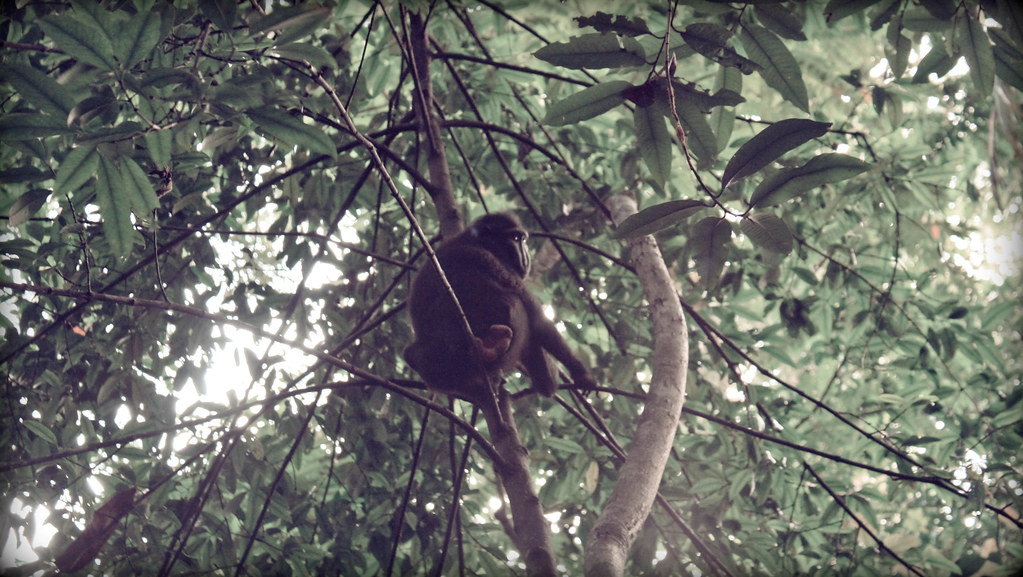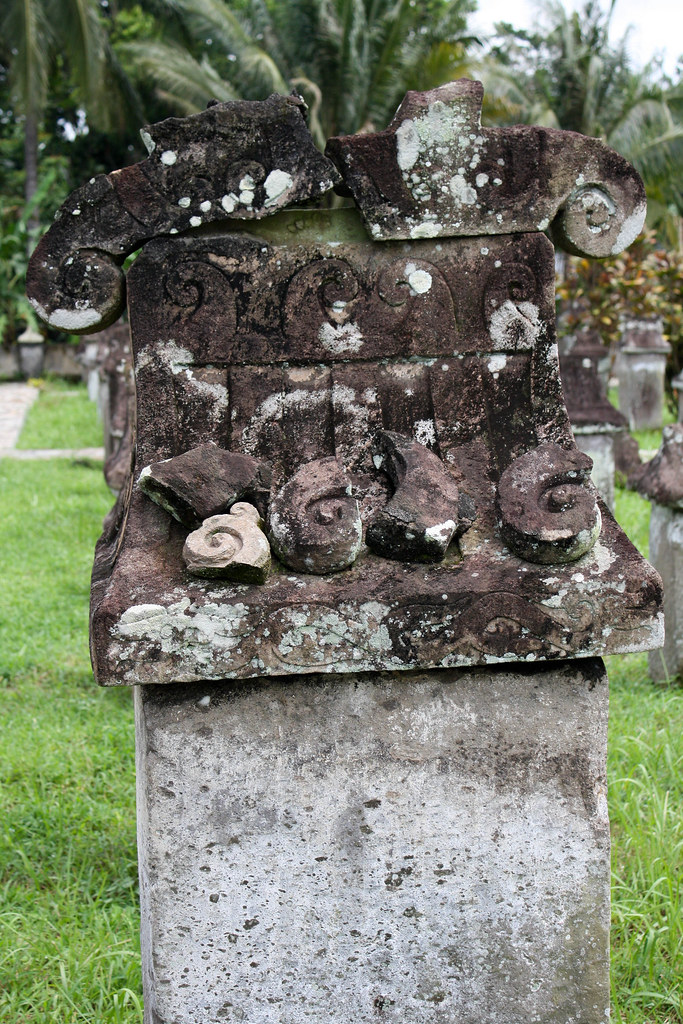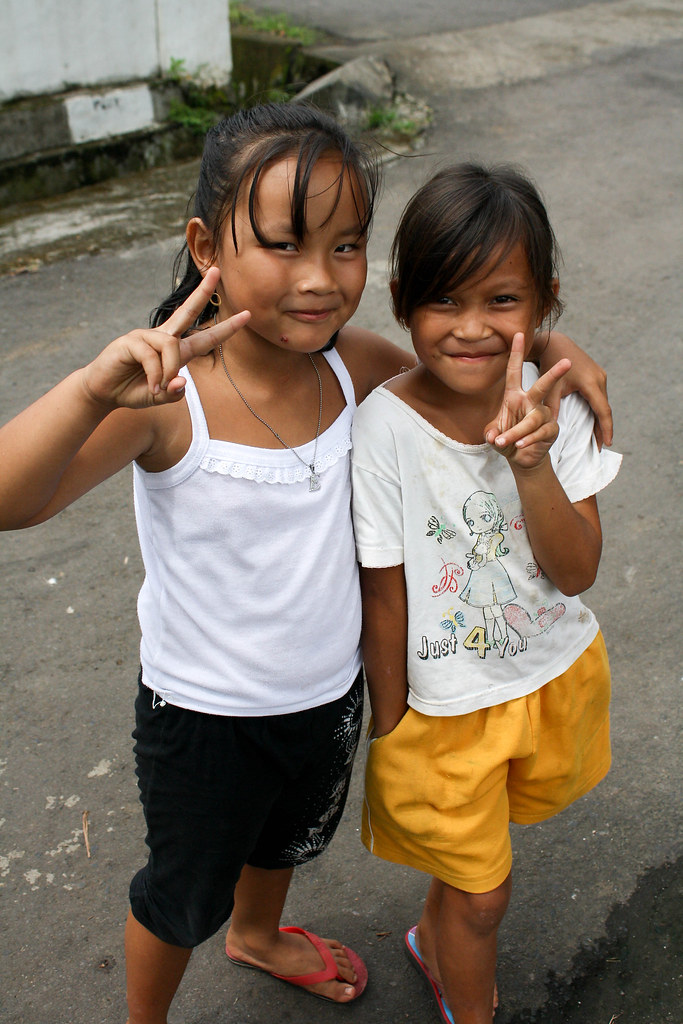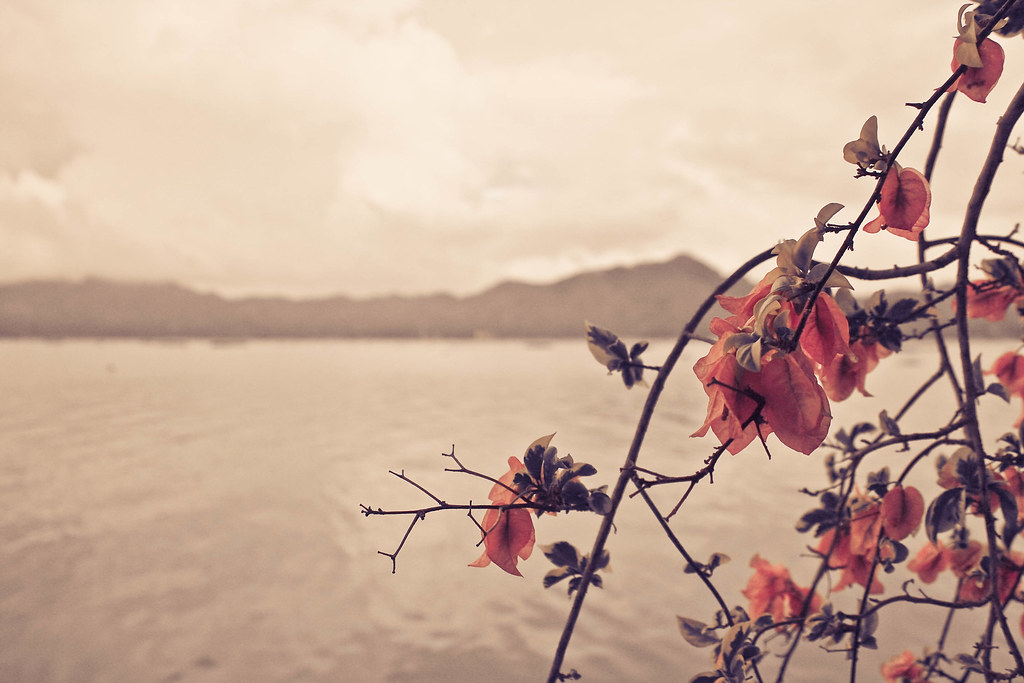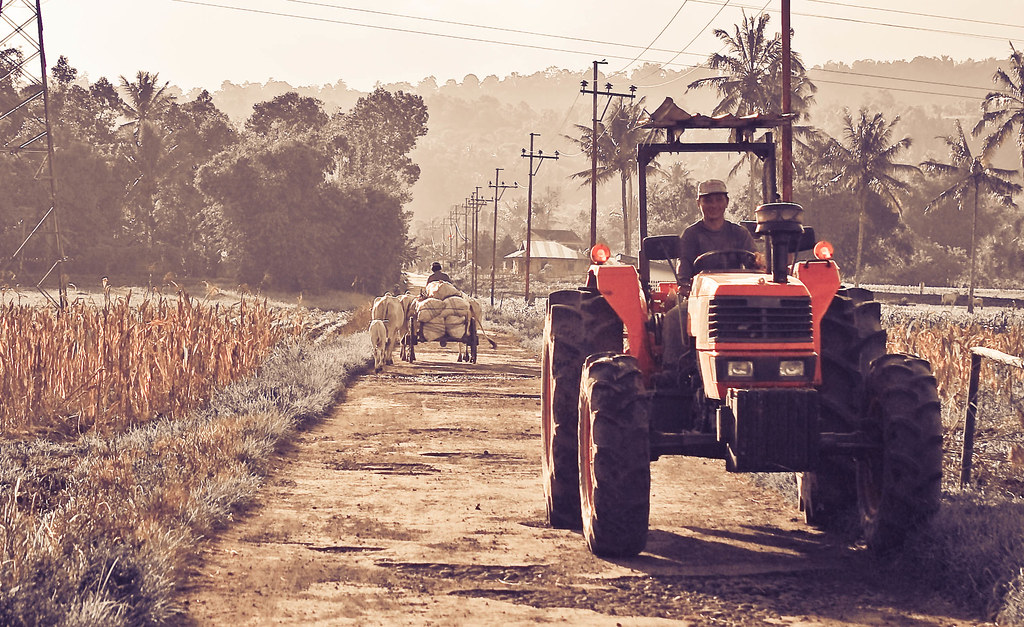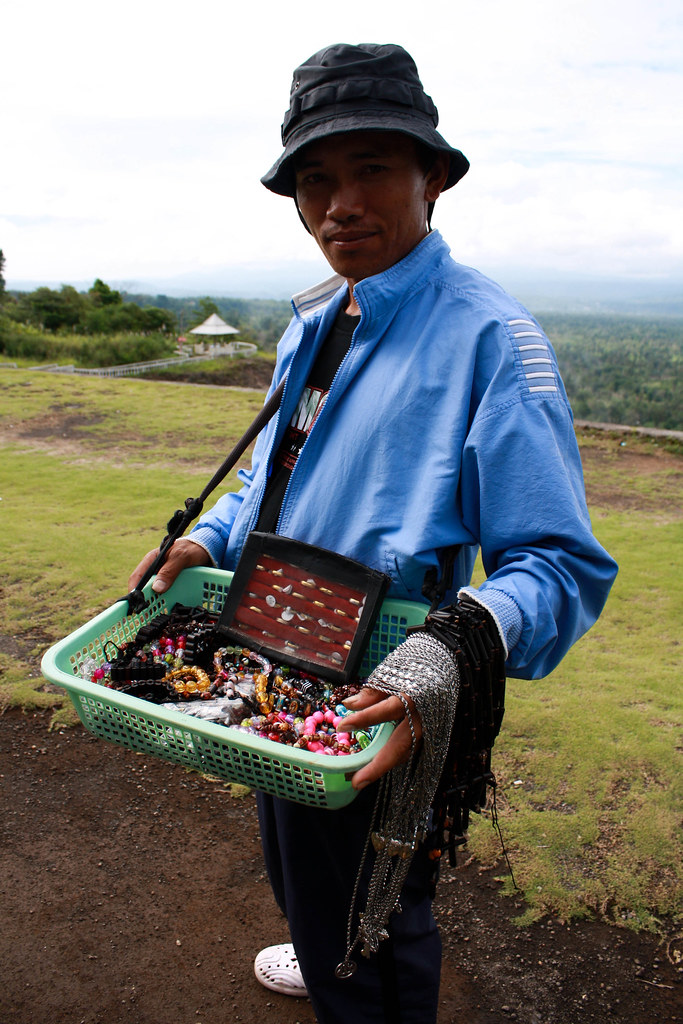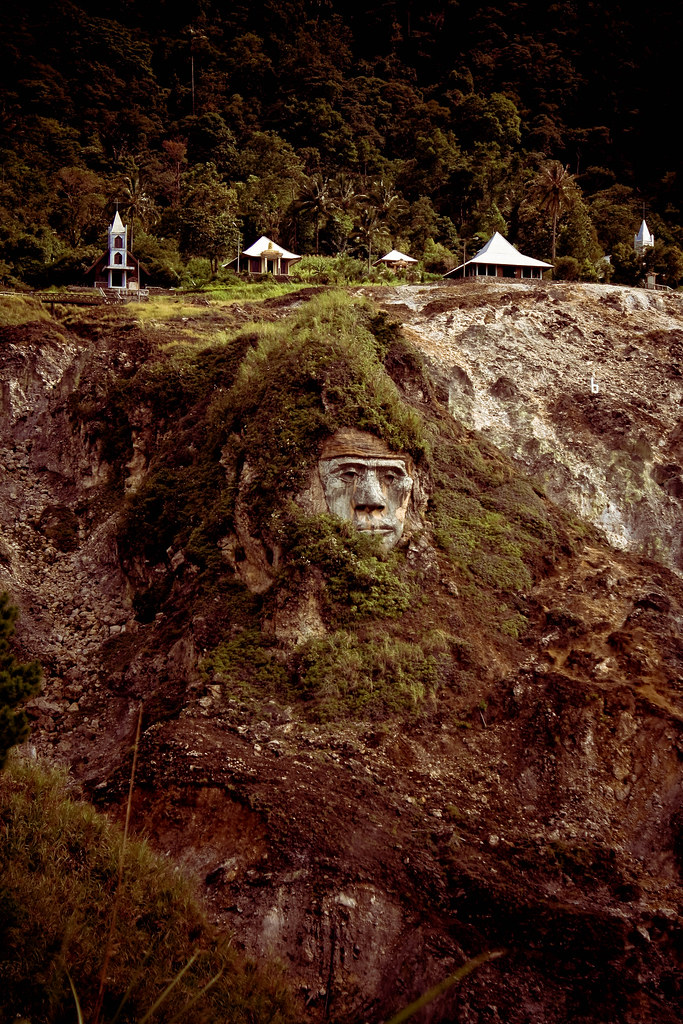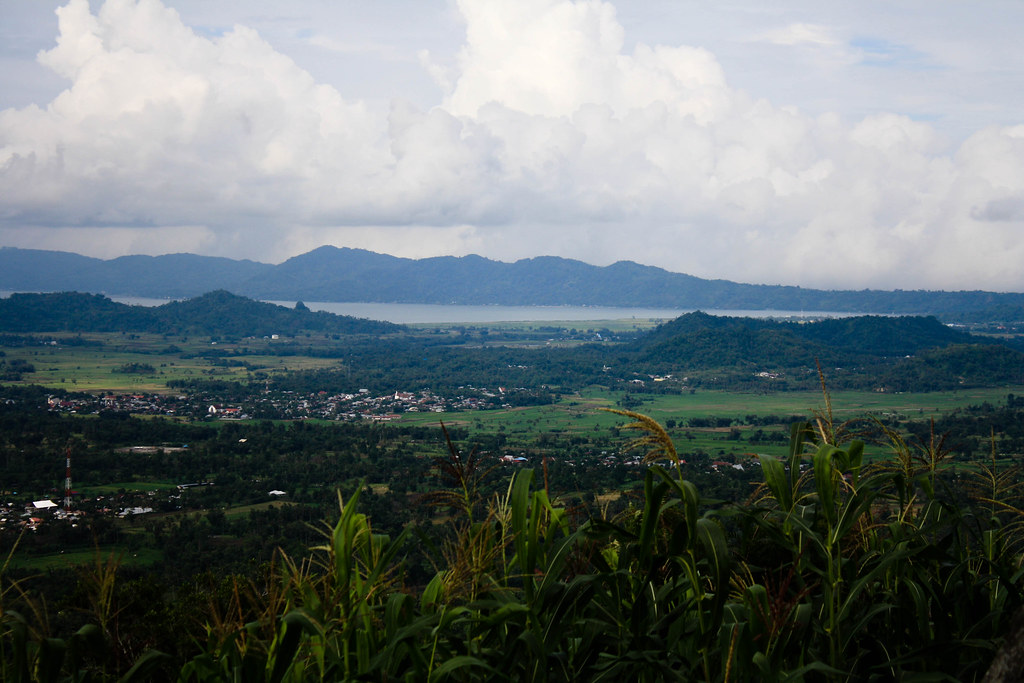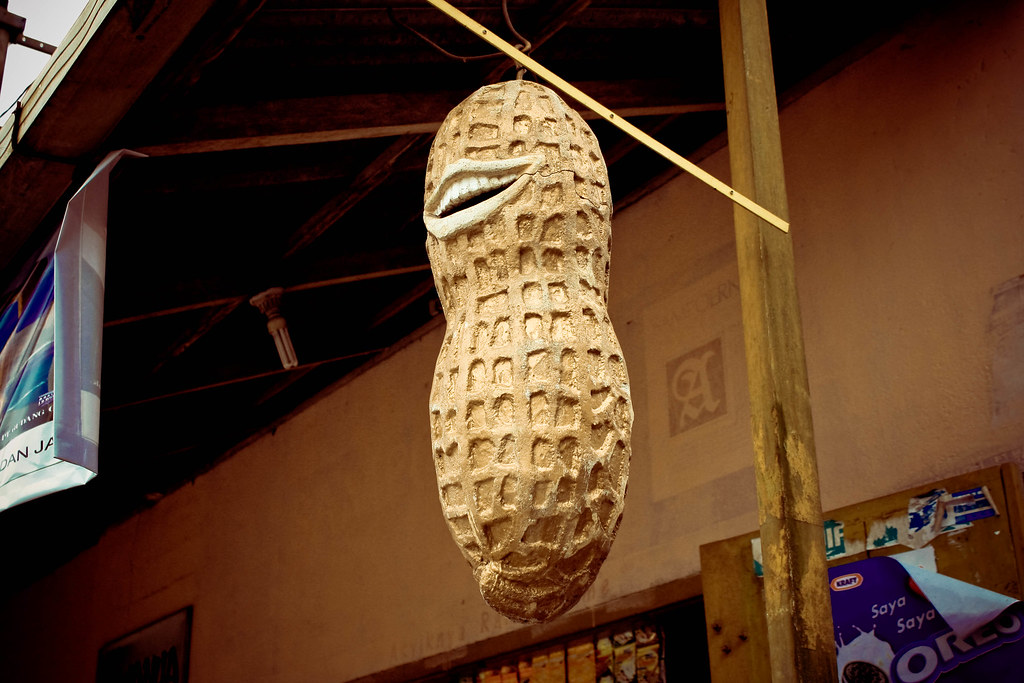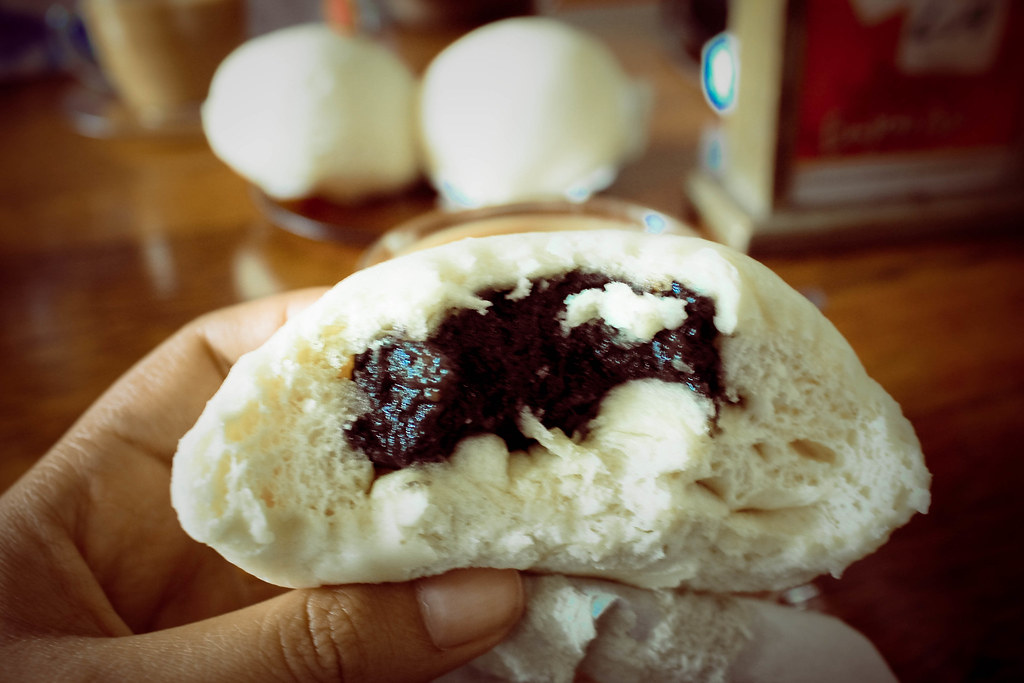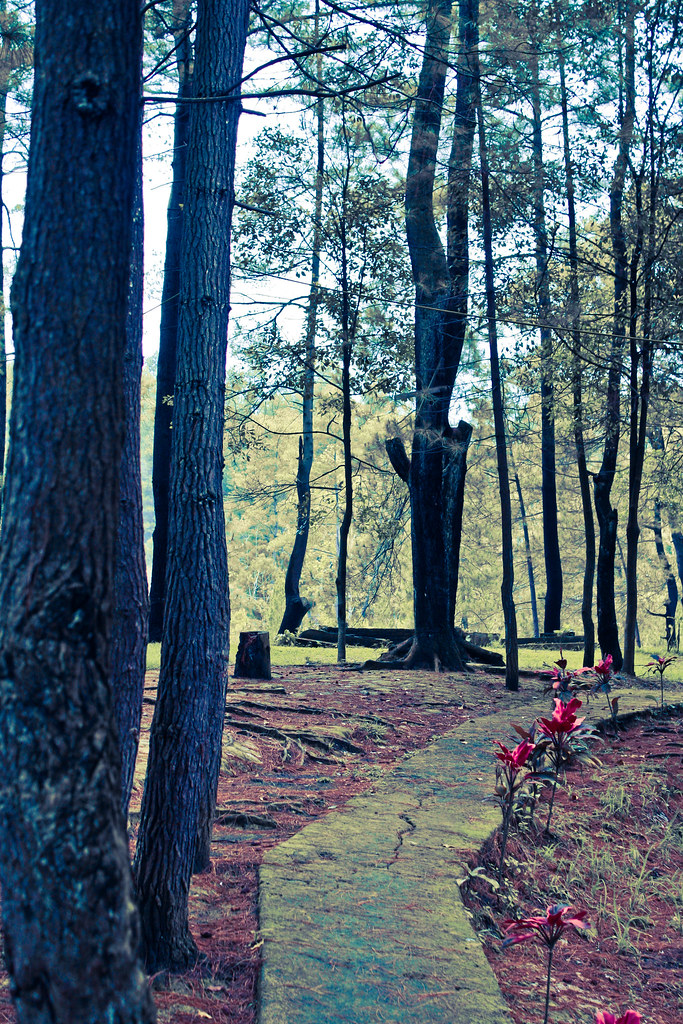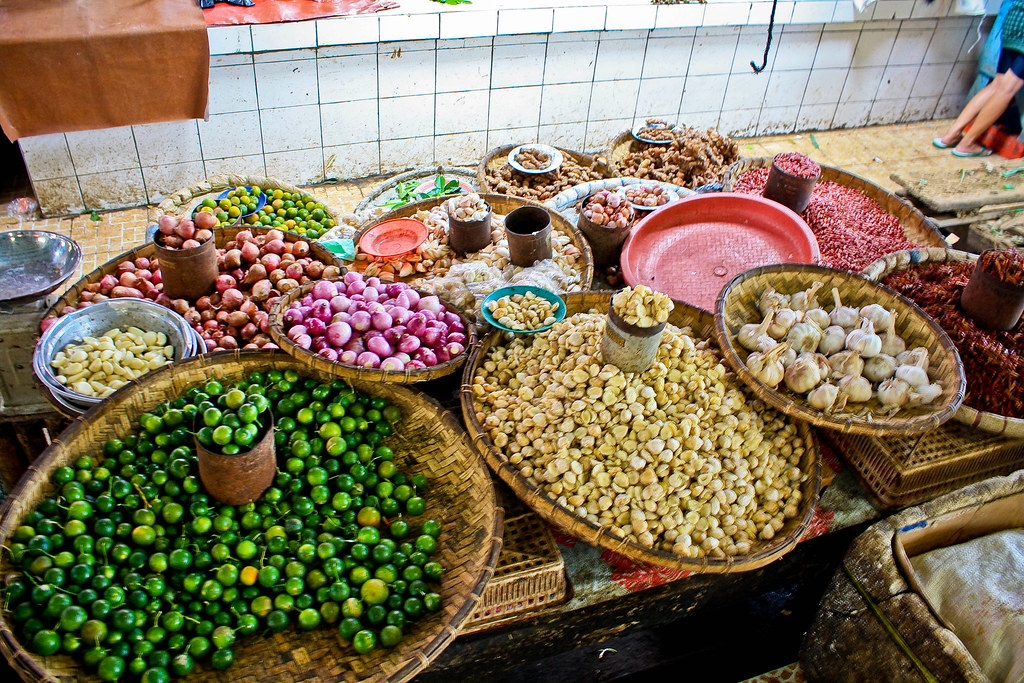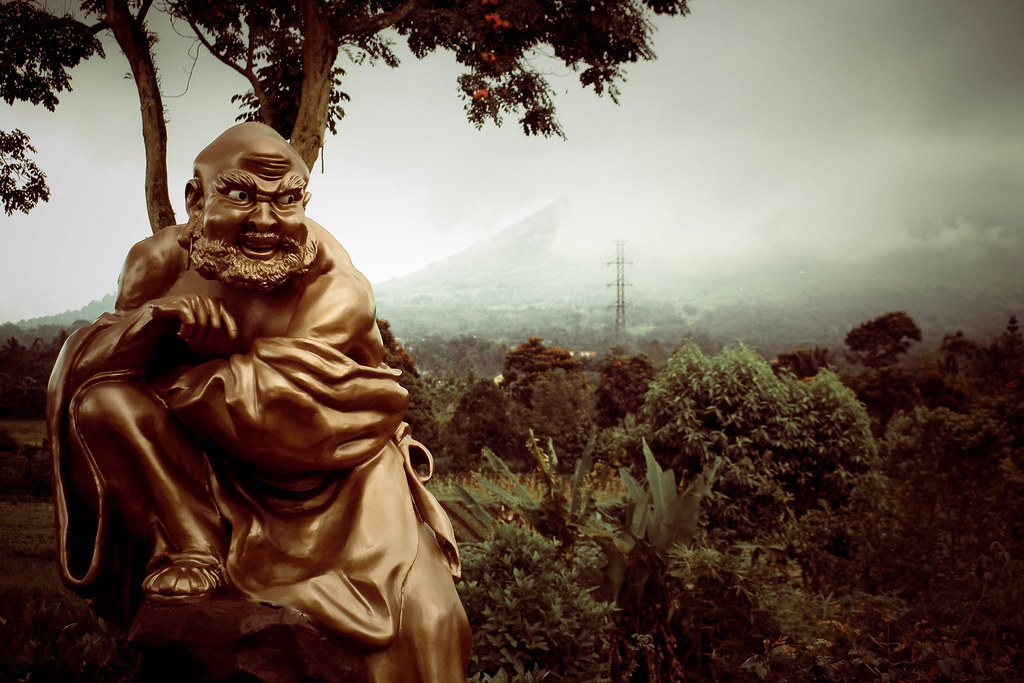Next stop was the Tangkoko Nature Reserve. Head to Bitung, another big city in North Sulawesi, and there will be a small sign (you can barely see it) stating that this is the road to the Tangkoko Nature Reserve. The roads are small and hilly, and make sure you ask people where it is because you can easily get lost in the area. Arriving in the nature reserve, each guest must pay an entry fee (they differentiate between local and international tourists - foreigners pay approx IDR 85,000 each), and they will provide you with a guide. I forgot whether you also have to pay for the guide or not, but it is better for you to have one because the forests are lush and deep and it's hard to get around if you don't know the field. Make sure you wear comfortable shoes, and don't forget to use an mosquito repellent lotion.
We were lucky that right away, we spotted a Celebes Crested Macaque (Macaca nigra) on top of a tree, and our guide suggested that this fellow is one of the scouts for the macaque groups. He said that these macaques travel in groups, and usually they put one scout in front of the group and this scout will report to the group's leader on the situations ahead. Their body and skin are entirely black, except that their bum is a bit white (or reddish) and hard. We can't get too close to them, and were advised not to look at them directly to their eyes (as it shows an offensive gesture) but we were very lucky that we saw them in their natural habitat. According to the IUCN list, they are critically endangered.
Friday, July 09, 2010
Waruga in Airmadidi
Our first visit on the next day during our trip around North Sulawesi was Airmadidi (which literally means Boiling Water), that had some ancient Minahasan tombs called waruga. Corpses are not buried underground, but they are placed in a fetal position inside the tombs, together with jeweleries and other material possessions that they have. Of course there are no corpses inside the waruga in Airmadidi now, and most of the treasures inside them are either plundered, or some treasures that luckily survived is housed inside a museum (somewhere which I do not know). It's very interesting to see the carvings on top of the tombs.
Thursday, July 08, 2010
Portrait: Children Playing at the Airmadidi Waruga
Cute kids. Until they said "minta doi" to me. I asked my guide on what is the meaning of "minta doi", and he said, they're asking me for money. Hmm.
Flowers, Lake Tondano
Stopped by at Tumou Tou restaurant by Lake Tondano for our last site of the day. The lake has an eerie feeling to it for some reason, and I guess the best time to come would be in the afternoon where usually it gets a bit more interesting when the surrounding mountains gets misty and mysterious...
Friday, July 02, 2010
Out with the old, in with the new
After our trip to Bukit Kasih, we wanted to go to Lake Tondano. We got lost, obviously, because we were clueless about the area and there's no map in our hands. But I didn't mind getting lost amongst the paddy and corn fields, and here I spotted two farmers, one with a tractor and one with an ox, chatted in the middle of the road, and then said their goodbyes and moved on with their errands. Simple things such as this makes me happy.
Portrait: Farmer Oma
Labels:
Bukit Kasih,
Indonesia,
Kawangkoan,
people,
Portraits,
Sulawesi
Portrait: Hat Seller Girl
Labels:
Bukit Kasih,
Indonesia,
Kawangkoan,
people,
Portraits,
Sulawesi
Portrait: Accessories Seller Man, Bukit Kasih
Labels:
Bukit Kasih,
Indonesia,
Kawangkoan,
people,
Portraits,
Sulawesi
Bukit Kasih, Kawangkoan
I guess the epitome of religion/faith-based tourist attraction in North Sulawesi would be Bukit Kasih in Kanonang, Kawangkoan district. When I first arrived in Manado, there were several posters stating "Torang Samua Basudara", which I guess the literal translation would be "we are all brothers and sisters". This philosophy would be the core foundation of religious tolerance in North Sulawesi which I find very, very impressive. There's this Western view that Indonesia is a terrorist-ridden country, and just because the majority of the population are Muslims, there's no room for other people of different religion to practice their faith. That view is absolutely wrong, and Bukit Kasih is a perfect example of harmony between the religions in Indonesia.
Since Bukit Kasih is basically a hill, a sulfuric hill to be exact, there are two stops that you can visit when you hike that hill. The first is the area where they built five praying buildings, Buddhism, Christian Protestant, Catholic, Hinduism and Islam, side by side. On the cliff, they carved a depiction of a Minahasan ancestor so it adds an interesting aspect to the site. The place also had several Minahasan statues and rumor has it, on some days the statue can move and dance on its own (tourist guide myths - although I must admit the statues were creepy). The second stop would be a giant cross, overlooking the surrounding area. You can see Lake Tondano and several agro-tourism spots that circles Bukit Kasih from above.
A word of advice, don't forget to bring water and perhaps some snacks when you hike the hill. We had no clue of how high the hill was and I tell you, I was out of breath and needed to take quite a long break when I reached the top because it is indeed pretty high.
Since Bukit Kasih is basically a hill, a sulfuric hill to be exact, there are two stops that you can visit when you hike that hill. The first is the area where they built five praying buildings, Buddhism, Christian Protestant, Catholic, Hinduism and Islam, side by side. On the cliff, they carved a depiction of a Minahasan ancestor so it adds an interesting aspect to the site. The place also had several Minahasan statues and rumor has it, on some days the statue can move and dance on its own (tourist guide myths - although I must admit the statues were creepy). The second stop would be a giant cross, overlooking the surrounding area. You can see Lake Tondano and several agro-tourism spots that circles Bukit Kasih from above.
A word of advice, don't forget to bring water and perhaps some snacks when you hike the hill. We had no clue of how high the hill was and I tell you, I was out of breath and needed to take quite a long break when I reached the top because it is indeed pretty high.
Labels:
Bukit Kasih,
Indonesia,
Kawangkoan,
Sulawesi,
travel
Thursday, July 01, 2010
Kawangkoan Coffee Stop
After the gruesome sight in Tomohon Market, we continued to Kawangkoan in order to see Bukit Kasih, another religion-based tourist attraction in North Sulawesi. But before that, we stopped by the road to buy some Kawangkoan peanuts, which I recently knew that peanuts were the thing to buy if you go there. Besides the peanuts, make sure to drop by at Rumah Kopi Gembira for the great coffee, brewed from local beans, and the steamed buns. Oh, the steamed buns. We tried the steamed buns filled with mung beans (Bakpao Temo') and it is by far the most delicious steamed buns I've ever tasted. You can also try the pork-filled steamed buns (Bakpao Ba'), but we skipped that.
So I bought some steamed buns for souvenir snacks. Keep them refrigerated, and it is still eatable by a week - but make sure you steam them again before you eat them. We also wanted to buy some coffee beans, but unfortunately a man came just before us and bought the last of them :(
So I bought some steamed buns for souvenir snacks. Keep them refrigerated, and it is still eatable by a week - but make sure you steam them again before you eat them. We also wanted to buy some coffee beans, but unfortunately a man came just before us and bought the last of them :(
Tomohon's Macabre Market
The Tomohon market in North Sulawesi, Indonesia is basically your usual market, I guess…for the people of Minahasa. But definitely not for tourists or for those of you who are, uhm, prone to queasiness.
You see, Minahasa people are quite (in)famous for their reputation to be able to eat anything. Yes, anything.
So in this particular market, they sell bat meat and dog meat, and I was “fortunate” to see them still being sold at the market. If you’re really adventurous, go on Tuesdays, Thursdays, and Saturdays in the morning where they have more selections or specialties, i.e. snake meat. They say they also eat cats. Come in around August where they have this kind of feast, but don't bring your pets as they might end up in your plate.
The worst part is you see live dogs in cages. Just like you see pigs or chickens before they are butchered, but here you see dogs. To make you feel better (I guess - I'm being sarcastic), the caged ones are ugly, skinny dogs (Indonesians say it as anjing kampung), not one of those fancy ones - the kind Paris Hilton would adopt.
I don't want to put pictures of grilled bats or, maybe the worst is grilled dogs (literally - not the sausage kind). If I do, my blog would probably be reported by PETA. If you want to see the pictures, you can contact me and I’m willing to share the adventure. Or the cruelty. Or the gruesomeness. Or maybe just to fulfill your curiosity. So I'm just going to share this "safe picture" instead :)
You see, Minahasa people are quite (in)famous for their reputation to be able to eat anything. Yes, anything.
So in this particular market, they sell bat meat and dog meat, and I was “fortunate” to see them still being sold at the market. If you’re really adventurous, go on Tuesdays, Thursdays, and Saturdays in the morning where they have more selections or specialties, i.e. snake meat. They say they also eat cats. Come in around August where they have this kind of feast, but don't bring your pets as they might end up in your plate.
*moment of silence*
The worst part is you see live dogs in cages. Just like you see pigs or chickens before they are butchered, but here you see dogs. To make you feel better (I guess - I'm being sarcastic), the caged ones are ugly, skinny dogs (Indonesians say it as anjing kampung), not one of those fancy ones - the kind Paris Hilton would adopt.
I don't want to put pictures of grilled bats or, maybe the worst is grilled dogs (literally - not the sausage kind). If I do, my blog would probably be reported by PETA. If you want to see the pictures, you can contact me and I’m willing to share the adventure. Or the cruelty. Or the gruesomeness. Or maybe just to fulfill your curiosity. So I'm just going to share this "safe picture" instead :)
Ring the Bell
They say if you can ring the bell with a coin that you throw, you can get what you want based on the point where you are standing. Happiness is tempting, no?
Pagoda Ekayana, Tomohon
Moving on to another religion/faith-based tourist attraction in North Sulawesi, we traveled to Tomohon and stopped by at the Ekayana Pagoda. It's located not far from when you enter Tomohon, but you have to ask the locals where it is exactly located. Arriving at the Pagoda, you are greeted by the line of statues decorating, or should I say "guarding" the place with their backs against the Lokon Mountain in the background. Apart from the Pagoda, there's the Kwan Im Shrine (I hope I get this right) and some sort of shrine shaped like a tortoise. I'm very bad with the facts so please share me the information or a bit of history on this pagoda :)
Subscribe to:
Posts (Atom)

